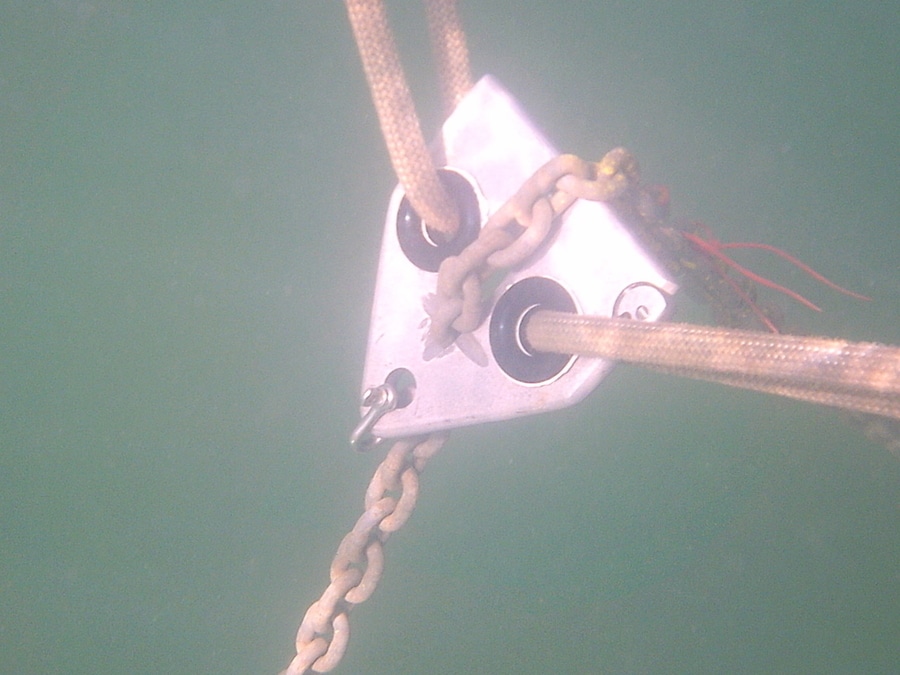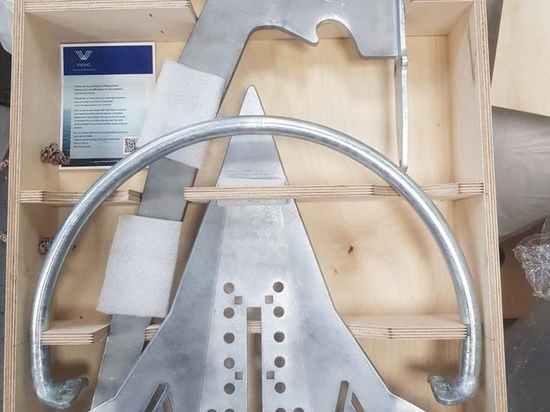
#Industry News
Snubbers and Bridles
Snubbers and Bridles, why using them?
Snubbers and Bridles serve similar purposes but with significant differences.
Bridles are very common on multi-hulls and can also be found on larger or beamy monohulls. Bridles are seldom seen on smaller monohulls because owners think they are difficult to rig, or of little value. Bridles can be of value on any yacht. Bridles are simply 2 snubbers, offering the value of a snubber, with the additional benefit they reduce veering.
No vessel is stable at anchor they veer, due to changes in wind direction or due to the characteristics of the vessel and any vessel is subject to horsing, that up and down motion due to waves and chop. In the extreme, these movements can result in snatch loads. It is easy to reduce the size of the snatch loads by deploying more chain - but most people carry a finite amount of chain and they certainly cannot increase the size of the chain link without a major investment. Additionally in the chosen anchorage, there may simply not be enough room to deploy more chain because there is not enough room (too many yachts, too small an anchorage).
A snubber or a bridle provides one way to replace chain length, cheaply - and arguably offering other benefits to the owner.
Any snatch loads you feel on your yacht are the same snatch loads imposed on your anchor.
Snatch loads are caused by the movement of the yacht, veering and horsing, and are often imposed on the rode in addition to any tension produced by windage. In addition, veering usually results in a snatch load being imposed on the anchor at an angle to the set direction - and all holding capacity data is derived in a straight line to the anchor with a steadily increasing load.
The best comparison to understand the role of a snubber or bridle is to think of a Bungee jumper. The jumper toward the bottom of his, or her, leap (of faith) is the gentle deceleration as the kinetic energy of the fall is transferred as potential energy to the bungee cord. At the bottom of the fall, the potential energy is then ’transferred’ to the jumper lifting them back up. The impact of the fall, the snatch load, is all absorbed by the elasticity of the bungee cord. A snubber, or the two arms of a bridle, do the same thing. They absorb the energy of the moving (veering or horsing) yacht to the cordage and this energy is then transferred back to the yacht as it is ‘pulled’ back.
Under benign conditions the catenary of the chain performs the exact same role - but as conditions become more arduous (commonly around 30 knots) and the chain ‘looks’ straight the catenary has offered its all. When the chain is straight there is little catenary left and in the absence of anything else, a snatch load occurs. A snubber removes that snatch load.
Of course, it is not black and white and the snubber and catenary work together but the catenary does have a finite limit. The elasticity of a good bridle will work to much higher tensions than available from catenary.
The snubber or bridle can be attached to the chain by a variety of mechanisms, chain hook, soft shackle, or rolling hitch but Viking offers a specially designed bridle plate, accepting 2 snubbers, one port, one starboard, focussed at larger monohulls and multihulls.
Most multihull bridles are too strong and too short offering very little elasticity.
The Viking system relies on commencing each snubber at the bobstay pad eye, running to the bridle plate, then to a turning block on the bow, down the side decks to a cleat on the transom. This arrangement provides approximately 2 times the deck length of the snubber on each hull. Because of the configuration, the bridle offers the normal ‘horizontal’ triangle, reducing veering and also a vertical triangle reducing horsing. The aperture of the bridle plate is specially designed such that the upper portion of the snubber stretches more than the lower portions and the scope ratio is enhanced because this setup ‘forces’ the chain to or under the water surface. At the transom, we recommend that the snubber arms are overly long and if conditions deteriorate it is easy to deploy more snubber, by taking the spare length of rope around a winch.




